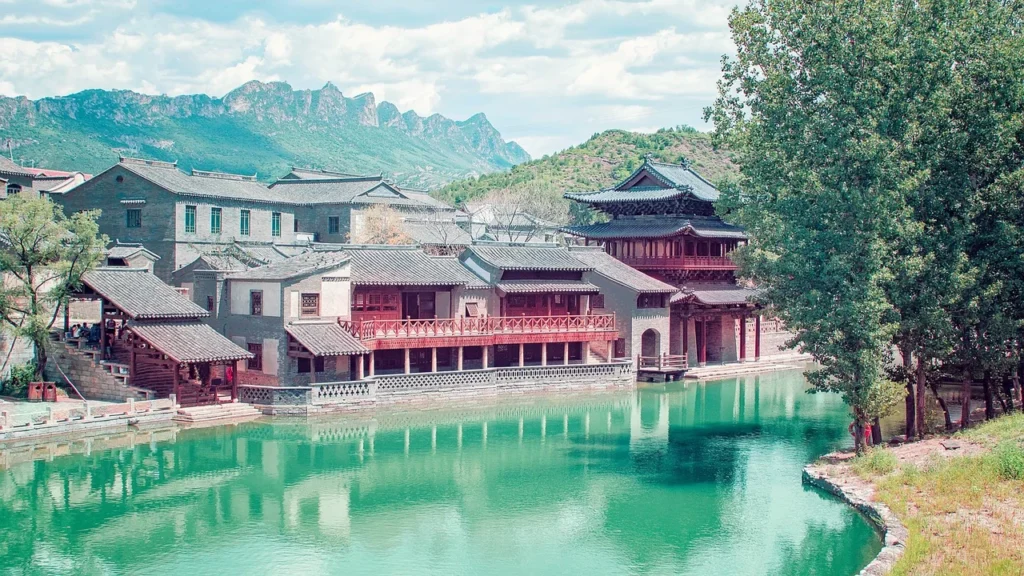Introduction
Anheihe, located within China’s Anhui province, continues to evolve as a cultural landmark that reflects both historical richness and modern creativity. Once known primarily for its ancient folklore and artisanal heritage, Anheihe now stands at the crossroads of global recognition. In 2025, renewed governmental and private investments in tourism, digital cultural preservation, and creative arts have positioned Anheihe as a regional leader in cultural sustainability and innovation. This article takes a comprehensive look at Anheihe’s past, its ongoing transformations, and how it bridges tradition with progress.
The Origins of Anheihe: Foundations of a Cultural Edifice
The historical roots of Anheihe trace back over a thousand years. The name itself—often interpreted as “peace and prosperity”—remains a powerful emblem of the town’s cultural philosophy. Archaeological research published in early 2025 uncovered ancient settlement patterns and unearthed tools believed to date back to the late Neolithic period. These discoveries reinforce Anheihe’s longstanding role as a cradle of early Chinese civilization.
Storytelling traditions remain strong, with digital archives now preserving oral histories once passed down solely through families. These digital efforts, supported by local universities, ensure that Anheihe’s ancestral memory is accessible to younger generations and international scholars.
Natural Landscape of Anheihe: A Canvas of Breathtaking Beauty
In recent years, environmental conservation has become a cornerstone of Anheihe’s development plan. With the establishment of the Anheihe Ecological and Heritage Reserve (AEHR) in late 2024, the region’s natural and cultural landscapes are now jointly managed under a protection charter.
Visitors can now experience the intertwining beauty of Anheihe’s rivers, forests, and terraced hills through eco-tours that highlight both biodiversity and traditional land use. Guided routes often include stops at historical temples, bamboo forests, and artisanal villages, further reinforcing the link between nature and culture.
History and Culture of Anheihe: A Tapestry Woven Through Time
Anheihe’s history is more than static memory; it is an evolving identity. In 2025, a collaborative exhibition with the National Museum of China showcased Anheihe’s contributions to Ming-era ink stone production and its unique form of Confucian educational design.
The town’s artisans continue to play a pivotal role. A new program, the Anheihe Traditional Craft Initiative (ATCI), provides grants and global e-commerce support for local craftspeople. Ink stone carving, calligraphy brushes, and silk-dyeing workshops are now part of formal apprenticeship tracks supported by the Ministry of Culture.
Anheihe in Modern Entertainment: A Stage for Cultural Dialogue
The 2025 Anheihe Celebration Festival reached record international viewership thanks to a strategic broadcast partnership with national media. This year’s festival included digital theater performances, drone-enhanced light shows, and virtual reality (VR) storytelling installations based on regional myths like The Fisherman’s Lantern and The Bamboo Whisperers.
Emerging filmmakers and musicians from Anheihe have also gained traction on platforms like Douyin and Bilibili. Their works blend traditional narratives with current issues, creating cross-generational content that appeals to both domestic and global audiences.
Anheihe In Modern Society: Blending Traditions with Today’s Tempo
Anheihe’s younger residents are not just preserving their culture—they’re reinventing it. The opening of the Anheihe Center for Contemporary Cultural Expression (ACCCE) in January 2025 marks a major shift. The center functions as a hub for youth-led initiatives in fashion, food innovation, music, and urban design—all rooted in traditional heritage.
From sustainable textiles that incorporate bamboo fibers to food startups reintroducing fermented recipes for global palates, Anheihe’s modern identity is one of dynamic adaptation. These innovations are shared via livestreams, public exhibitions, and academic partnerships.
Anheihe in Lifestyle: Living the Culture
Daily life in Anheihe is shaped by routines that blend the historical with the functional. Markets open with ritual incense offerings, while community cooking events now integrate QR-code menus offering historical context for each dish.
Homegrown chefs have started offering “heritage tasting menus” that reinterpret regional dishes with international techniques. Meanwhile, traditional attire such as Hanfu has found new relevance through eco-conscious tailoring and streetwear collaborations with Shanghai-based fashion houses.
The Cultural Significance of Anheihe: More Than Just a Place
Anheihe is increasingly viewed as a cultural export brand. Through partnerships with cultural consulates, Chinese embassies in Europe and Southeast Asia are featuring rotating exhibits curated in collaboration with Anheihe’s artisans and curators.
Anheihe’s importance is no longer confined to China’s borders. From scholarly papers to global heritage forums, the region is frequently cited as a case study in maintaining cultural identity amid modernization.
Anheihe: A Celebration of Culture
The 2025 edition of the Anheihe Celebration focused on the theme “Echoes Across Time.” Notable highlights included:
- AI-enhanced re-creations of historical dance forms
- 3D-printed replicas of ancient ceramic artifacts
- International cultural delegations from South Korea, Italy, and Peru contributing to cross-cultural performances
The event not only celebrated the artistic vitality of the town but also emphasized its openness to international collaboration and reinterpretation.
Anheihe: A Bridge between Past and Present
The architectural identity of Anheihe is now officially protected under China’s National Cultural Heritage Zone regulations. Restoration projects in 2024-2025 have revived courtyards, shrines, and bridges using original building techniques, while also introducing seismic retrofitting and solar-powered lighting systems.
Interactive installations throughout the town enable visitors to scan QR codes at key sites to hear multilingual audio explanations, bridging the language and generational gap. This reflects the belief that preservation is not passive but must evolve with community needs.
Modern Concept of Anheihe: Culture as Innovation
In 2025, the term “Anheihe” is often used metaphorically by Chinese scholars and creatives to describe a model of “cultural continuity through innovation.” The region’s government now issues digital NFTs of traditional symbols—like the phoenix-ink stone seal—as a way to engage tech-savvy youth while funding restoration work.
Educational platforms also feature “Anheihe Modules” for online learners worldwide, showcasing its cultural values and history in formats ranging from micro-courses to immersive VR experiences.
Conclusion: Celebrating Anheihe, a Mosaic of History and Modernity
Anheihe’s evolution into a cultural hub is no accident—it is a deliberate balancing act between honoring legacy and embracing change. Through education, art, heritage preservation, and digital storytelling, Anheihe is redefining what it means to be a living culture.
No longer just a scenic town in Anhui province, Anheihe is now a beacon for communities around the world seeking to protect their roots while stepping confidently into the future. The story of Anheihe continues—one performance, one artisan, one innovation at a time.


